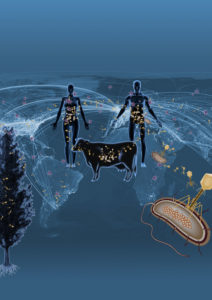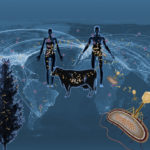 “We have increased the number of viral sequences by 50x, and 99 percent of the virus families identified are not closely related to any previously sequenced virus. This provides an enormous amount of new data that would be studied in more detail in the years to come. We have more than doubled the number of microbial phyla that serve as hosts to viruses, and have created the first global viral distribution map. The amount of analysis and discoveries that we anticipate will follow this dataset cannot be overstated.”
“We have increased the number of viral sequences by 50x, and 99 percent of the virus families identified are not closely related to any previously sequenced virus. This provides an enormous amount of new data that would be studied in more detail in the years to come. We have more than doubled the number of microbial phyla that serve as hosts to viruses, and have created the first global viral distribution map. The amount of analysis and discoveries that we anticipate will follow this dataset cannot be overstated.”
Although the number of viruses is estimated to be at least two orders of magnitude more than the microbial cells on the planet, there are currently less than 2,200 sequenced DNA virus genomes, compared to the approximately 50,000 bacterial genomes, in sequence databases. In a study published online August 17, 2016 in Nature, DOE JGI researchers utilized the largest collection of assembled metagenomic datasets from around the world to uncover over 125,000 partial and complete viral genomes, the majority of them infecting microbes. This single effort increases the number of known viral genes by a factor of 16, and provides researchers with a unique resource of viral sequence information. Read more on the DOE JGI website.




